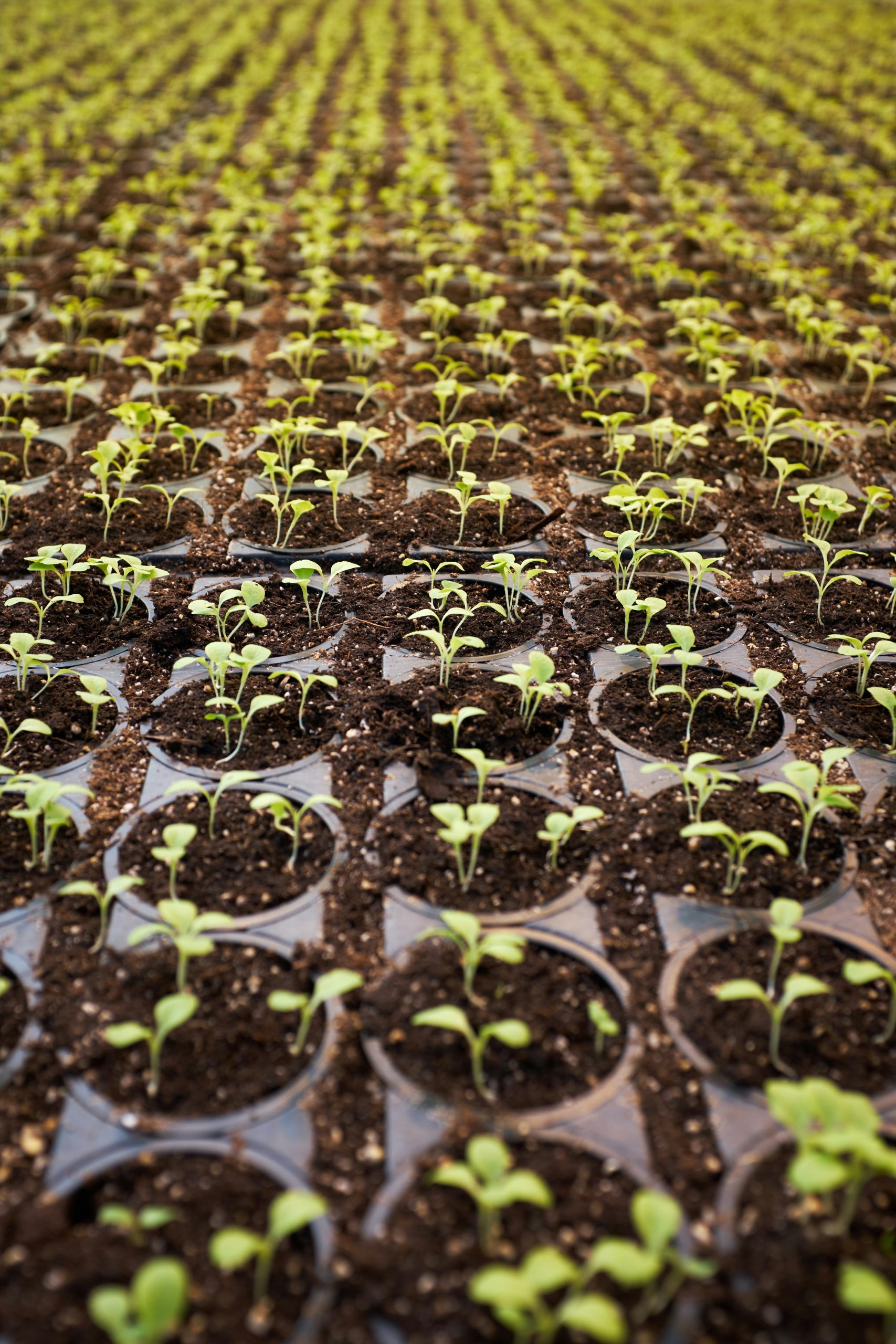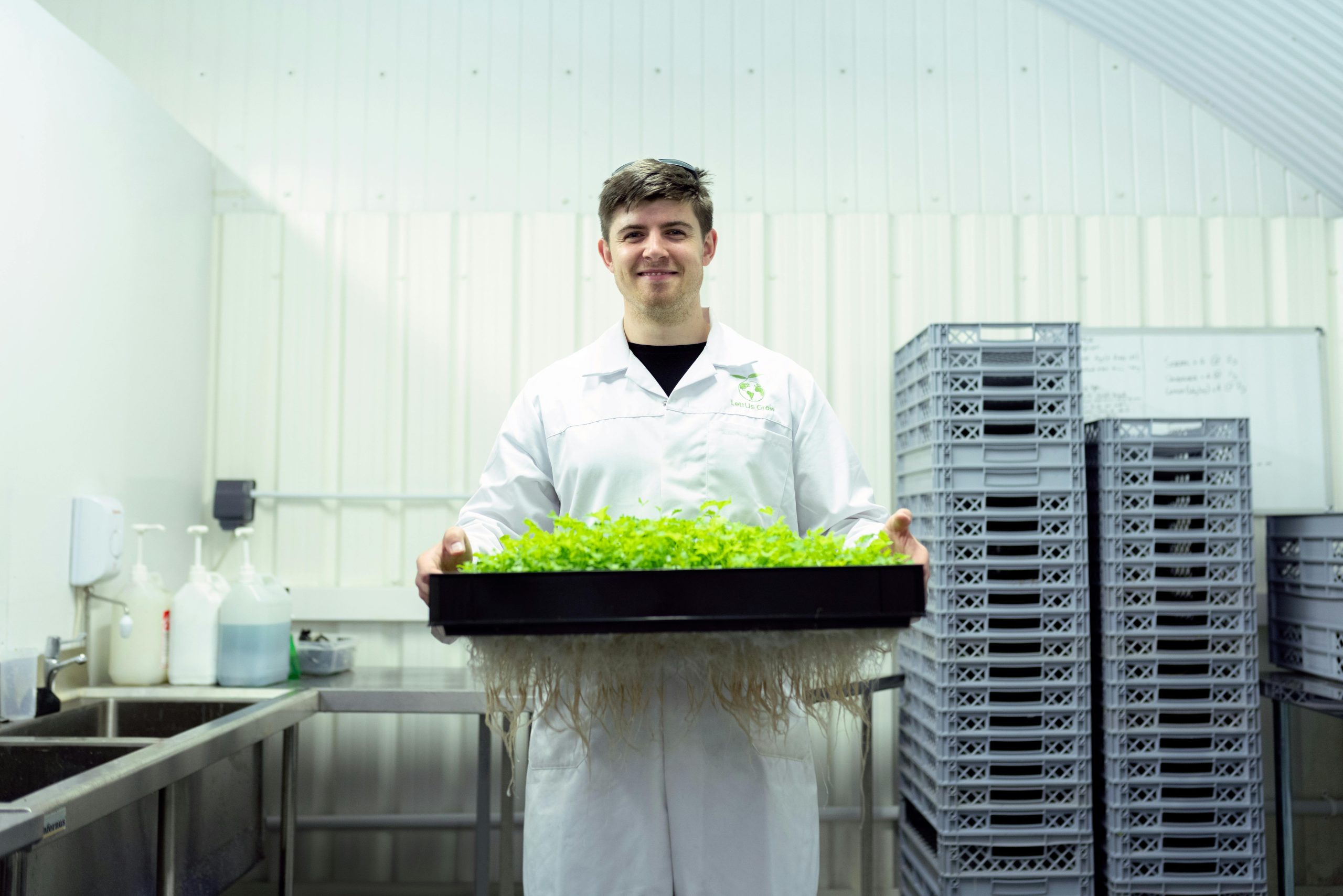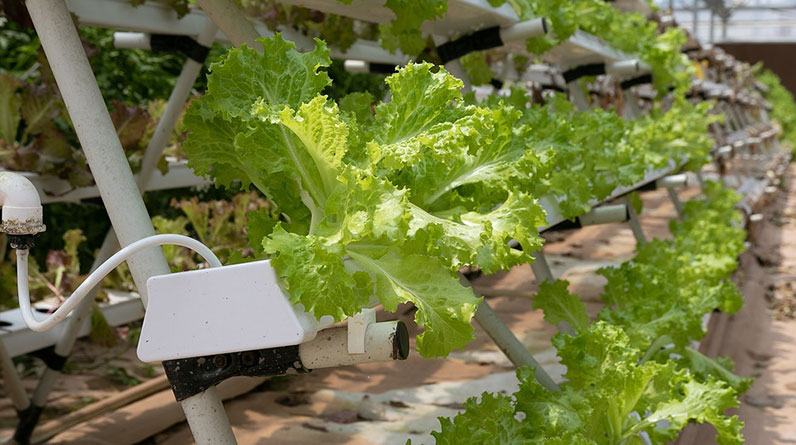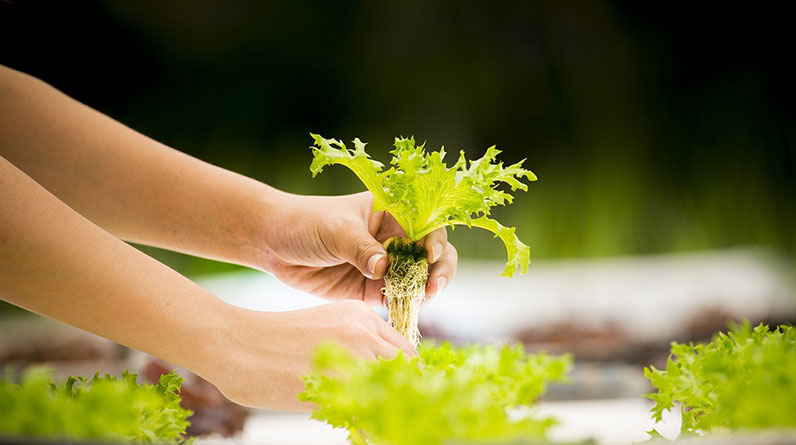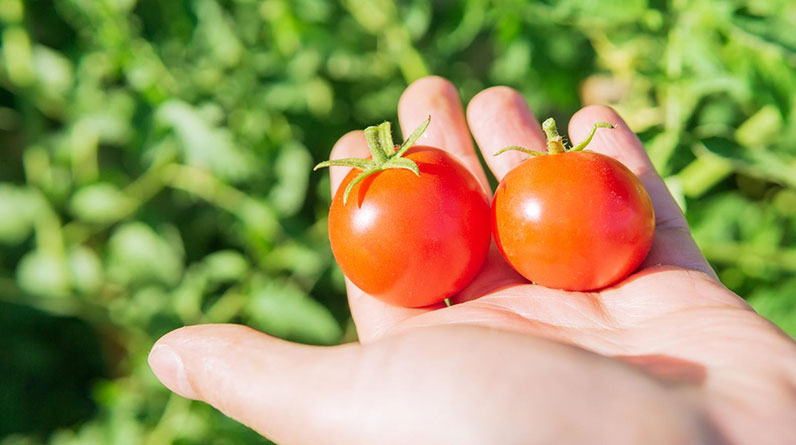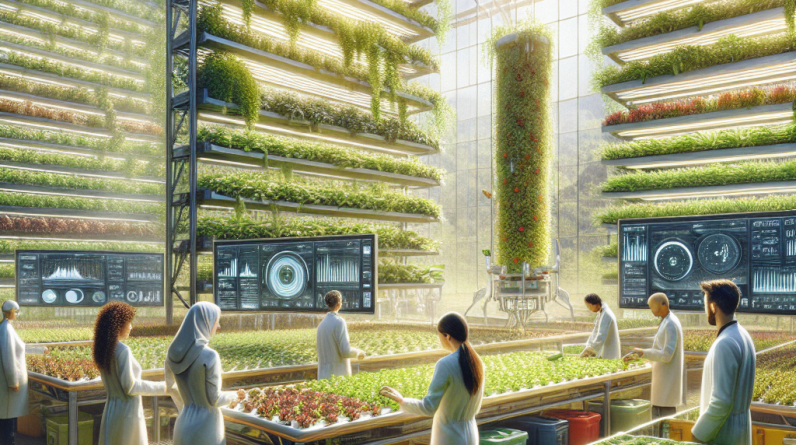
Understanding Hydroponics and Aeroponics
What Are Hydroponics?
Coming from my own curious journey into farming, I can say hydroponics is truly fascinating. It’s a method where plants are grown in a nutrient-rich solution without the use of soil. Picture this: no dirt, no mess, just water and mineral-rich nutrients doing the magic. This not only saves space but can also enhance growth rates significantly. Seriously, the initial setup might feel like a bit of a challenge, but it’s totally rewarding once you see those plants thrive!
On a practical level, hydroponics allows you to control the entire growing environment. You can monitor everything from pH levels to nutrient concentrations. It’s kind of like being a plant DJ—mixing the right tunes and vibes for your leafy friends to grow. And hey, if I can do it, so can you!
Plus, in places where quality soil is hard to come by, or if you’re just crammed for space (like me in my apartment!), hydroponics might just be the golden ticket. Getting started is as simple as setting up some containers and getting your hands on the right growing medium. Trust me, it’s easier than you think!
Aeroponics Unpacked
Aeroponics might sound like some sci-fi concept, but it’s actually super cool and pretty effective. It’s similar to hydroponics, but here, plants hang in the air and their roots are misted with a nutrient solution. It’s like giving your plants a spa day! This method uses less water than traditional farming, which is pretty sweet in our water-scarce world.
What’s fantastic about aeroponics is the ease of oxygen exposure to the roots. More oxygen means faster growth—how awesome is that? I remember the first time I tried it, I was just blown away by how quickly everything sprouted. It was like magic!
Plus, with aeroponics, pest issues are minimized because there’s no soil for those pesky bugs to hide in. It’s all about optimization and making the growing process efficient, which completely aligns with my own experiences in cultivating plants without soil.
Benefits of Soil-Free Systems
The benefits of going soil-free are numerous and honestly, it’s hard to list them all! For starters, without soil, you significantly reduce the risk of soil-borne diseases. That means healthier plants and less hassle for you as a gardener. I can’t tell you how much time I used to waste battling soil issues before I found out about hydroponics!
Additionally, soil-free farming uses water significantly more efficiently. I’ve seen a 90% reduction in water usage compared to traditional methods. It’s a win-win for both your plants and the planet! If you’re worried about water conservation (and you should be), this is a big selling point. You get stronger plants without wasting resources.
Lastly, these methods allow for year-round farming. That means you can grow your favorite herbs and veggies regardless of the season. I remember when I first harvested fresh basil in the middle of winter; it felt like such a small victory! Imagine cooking with fresh herbs out of your “indoor farm”—way cooler than running to the store.
Adopting Urban Agriculture
Urban Spaces Made Productive
Urban farming is an exciting frontier, and if you’re living in a city like me, this option is a game-changer. With rooftop gardens and vertical farms popping up everywhere, it’s remarkable how green spaces can flourish despite all the concrete. Growing in these urban spots helps to create a sense of community, and let me tell you, sharing garden produce with neighbors is one of life’s simple joys!
However, urban agriculture isn’t just about growing food; it’s creating a culture around local eating and sustainability. People are becoming more aware of where their food comes from, and they’re keen on supporting local initiatives. In my neighborhood, I’ve seen local farmers’ markets thrive due to this awareness shift.
Plus, urban farming helps in reducing food miles. With so much fresh produce growing right in our backyards, it cuts down on the transportation needed to get food from farm to street, resulting in a lower carbon footprint. It’s exciting to be part of a movement that contributes to the modernized food revolution.
Community and Collaboration
Getting involved in urban agriculture also opens doors for community collaboration. I’ve participated in several community gardens where folks come together, share knowledge, and learn from each other. It’s truly beautiful how sharing an interest can form bonds between people.
These community efforts often lead to food education initiatives where we teach others about the benefits of growing their own food. The satisfaction of seeing someone else’s eyes light up when they realize they can grow their own tomatoes makes it all worthwhile.
Additionally, collaborations can lead to more significant movements like food justice and sustainability micro-projects. Ever been part of a neighborhood garden clean-up? It feels great to give back, and it’s an opportunity to advance local food production while fostering a supportive community atmosphere.
Challenges in Urban Agriculture
Of course, urban farming comes with its own set of challenges. Space constraints are often a significant factor. Not everyone has a rooftop or a backyard, and that can lead to limitations in what can be grown and how much. But hey, we got to be creative, right? There are plenty of DIY solutions that can help maximize smaller spaces.
Additionally, funding can be tricky. Urban farms often rely on grants or community support to get started. In my experience, connecting with local businesses can provide both visibility and support—it’s about leveraging what you have!
We also can’t ignore the zoning laws that vary from one city to another. Navigating through local regulations can be cumbersome, but staying informed helps. I find that joining local gardening groups can keep you in the loop and even helps to advocate for more supportive policies!
Innovations Driving Soil-Free Farming
Take Advantage of Nutrient Solutions
One of the biggest innovations in soil-free farming is the development of advanced nutrient solutions. I was amazed to learn how tailor-made nutrients for specific plants could boost growth and yield. It’s quite incredible, really! Companies are investing heaps of research and development into finding the perfect balance of elements for optimal growth performance.
By leveraging technology, we’re no longer in the dark about what our plants need. The ability to analyze and customize varies from one type to another is something I’ve found immensely helpful. You wouldn’t believe the difference proper nutrition makes. My plants are flourishing like never before!
Also, the advancements in nutrient delivery systems—such as automated systems—have allowed for more precise applications. It eliminates guesswork! Just program it in, and let the tech handle it. And personally, saving time is a huge bonus when you’re juggling a busy life while trying to farm!
Automation and Smart Farming Tools
Technology has truly integrated itself into modern farming practices, and it’s changing the game. Smart farming tools can aid in monitoring plant health, water usage, and nutrient levels. I once tested out a smart sensor that tells me exactly when to water my plants, and it was a total lifesaver! Who doesn’t want an assistant like that?
With automation systems, farmers can focus on more critical aspects of farming rather than the nitty-gritty. Imagine setting your system to notify you when action is needed, allowing you to intervene at the right moment. Talk about working smarter, not harder!
And there’s something inspiring about knowing your farming practices are cutting-edge. It surely makes conversations at community gatherings way more interesting when you can share about the latest tools and systems you’re using. Plus, it keeps you engaged in constantly learning and adapting!
Growing Awareness and Interest
As people become more aware of the impacts of traditional agriculture, there’s a growing interest in soil-free solutions. It feels like a shift is happening right before our eyes, and it’s exciting to witness! Whether it’s through documentaries, social media, or local workshops, the buzz around sustainability and urban farming is palpable.
This surge in interest is leading to more educational programs and hands-on workshops, allowing others to delve into soil-free farming. I love seeing people excited to learn about growing their own food! It’s empowering, and I think it creates stronger communities.
Moreover, the increased demand for fresh, locally-grown produce means that there’s a bright future for soil-free farming. It’s inspiring to think that the methods we’re adopting today are paving the way for sustainable, food-secure futures.
Final Thoughts on Soil-Free Farming
In conclusion, the revolutionary shift toward soil-free farming brings exciting opportunities. I hope this article inspires you to explore these innovative methods. Whether you’re in a bustling city or have a backyard, soil-free farming can make a difference, both personally and globally!
By adopting methods like hydroponics and aeroponics, participating in urban agriculture, and embracing the latest innovations, we can contribute to a sustainable future. And let’s face it; it’s a rather fun journey as well! I can’t wait to see what you grow!
FAQ
What is soil-free farming?
Soil-free farming refers to agricultural methods that grow plants without the use of soil. Common practices include hydroponics, aeroponics, and other innovative farming techniques that utilize nutrient-rich solutions.
What is the main benefit of hydroponics?
The main benefit of hydroponics lies in its efficient use of space and resources. It promotes faster growth rates and healthier plants while minimizing the risks associated with soil-borne diseases.
Can anyone start an urban farm?
Absolutely! Urban farming can be accessible to anyone. Whether through rooftop gardens, community plots, or even vertical farming setups in small spaces, there are plenty of options to explore.
What tools are essential for soil-free farming?
Essential tools can include nutrient solutions, containers (or grow beds), water pumps, timers, and potentially, smart sensors for monitoring plant health. As you dive deeper, you might find more specialized tools that fit your needs.
Why is sustainable agriculture important?
Sustainable agriculture is vital as it ensures food production meets present needs without compromising future generations. It focuses on reducing environmental impacts while promoting food security and healthier communities.




